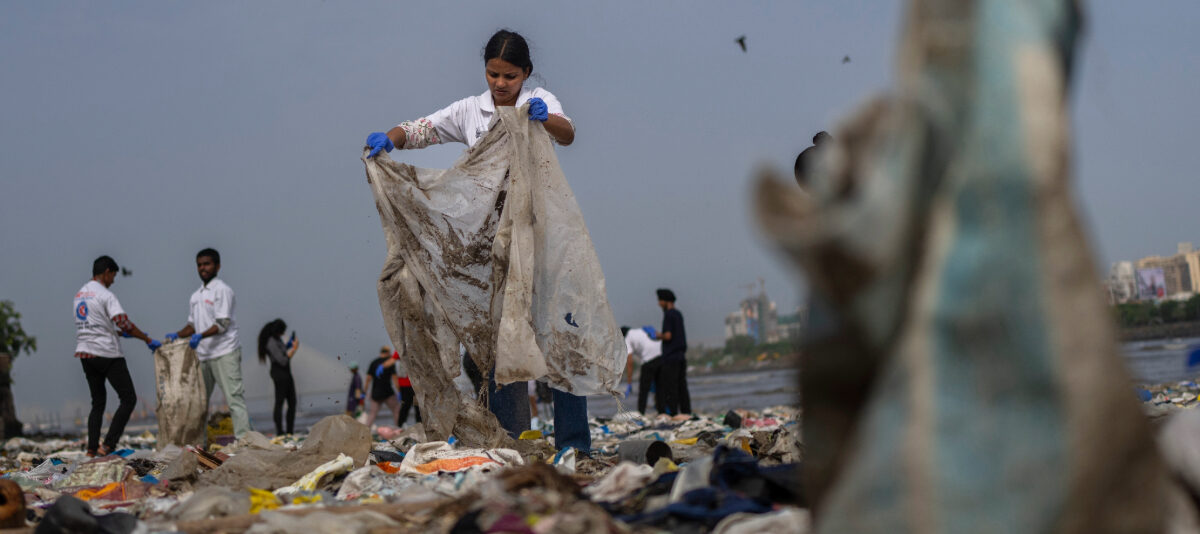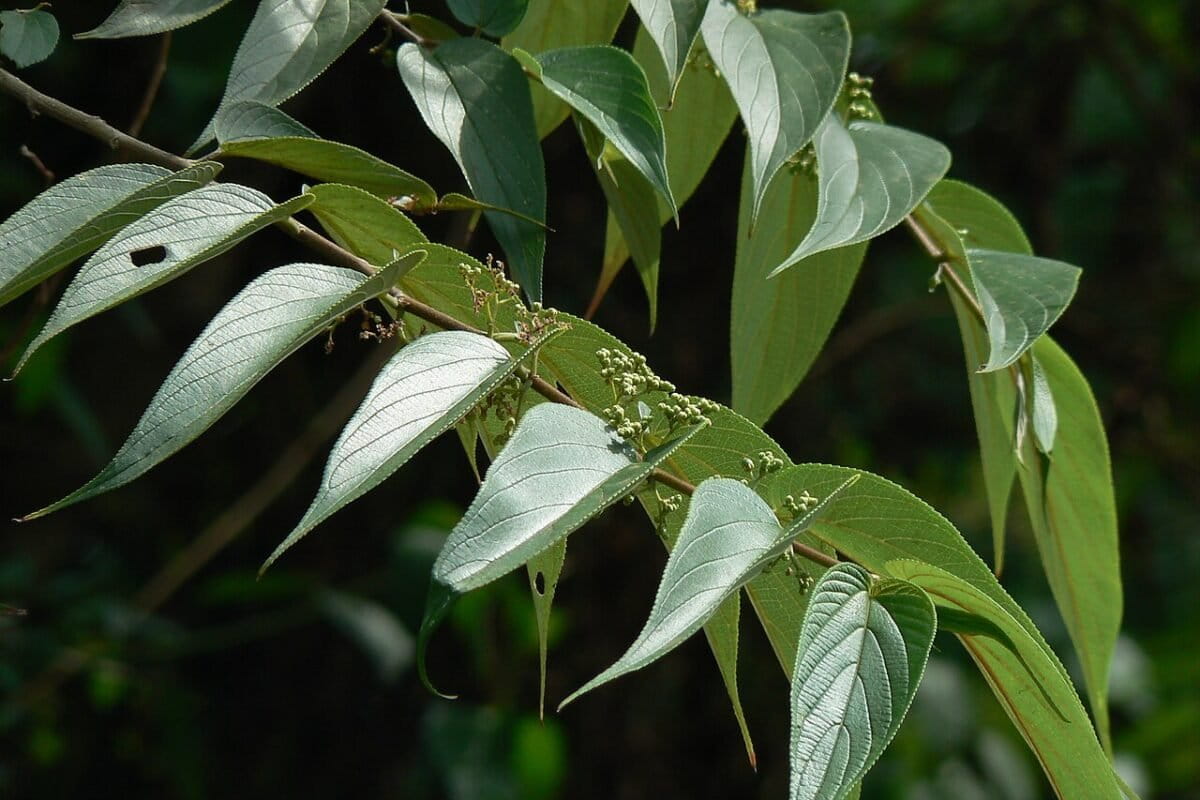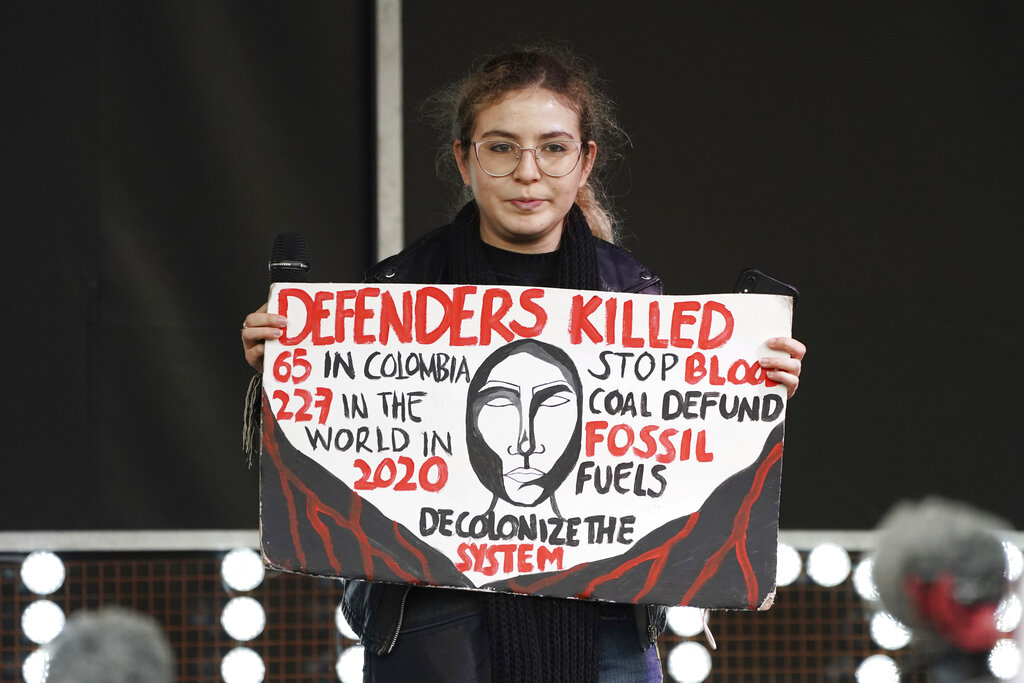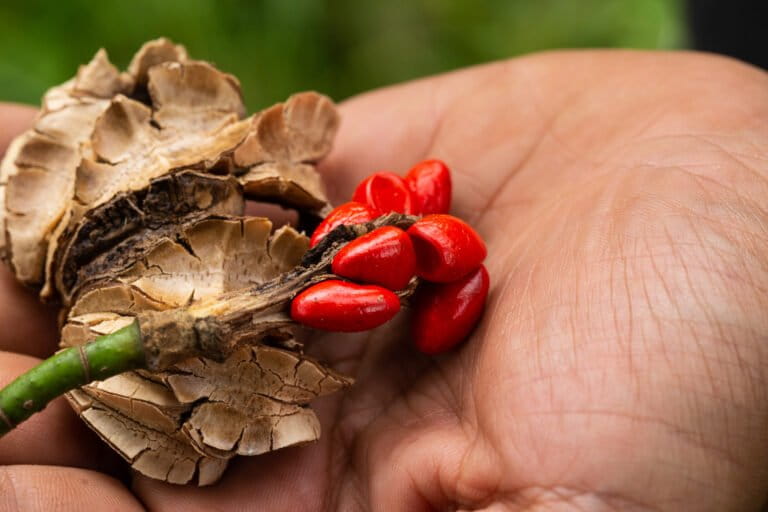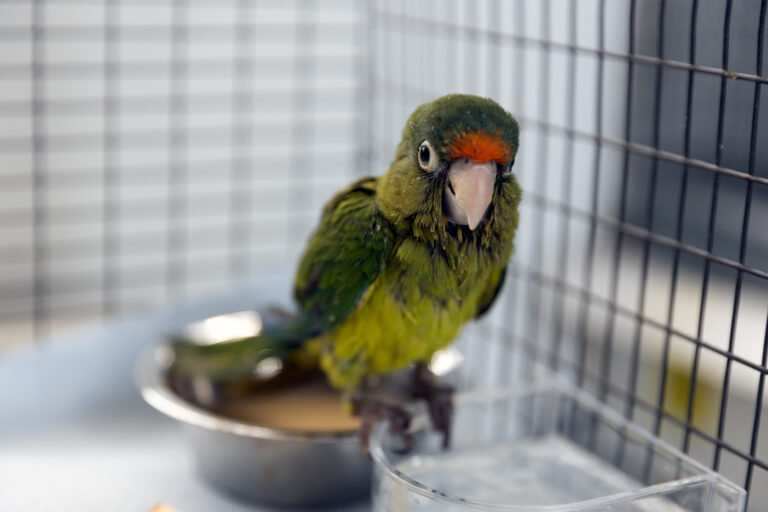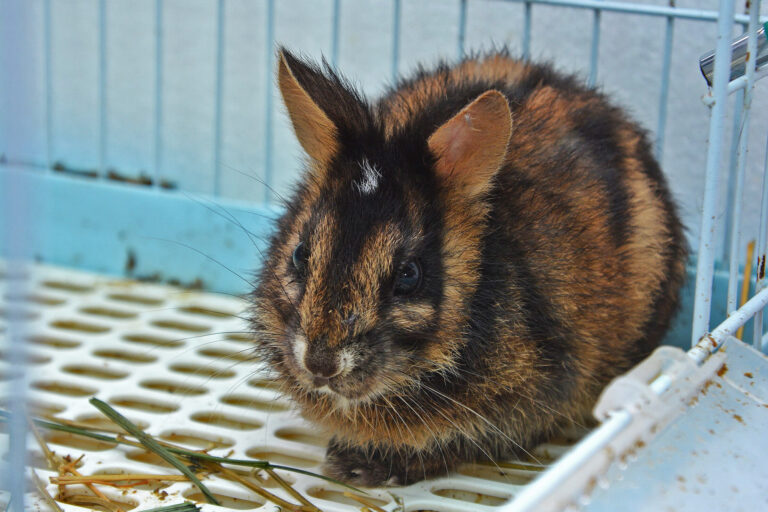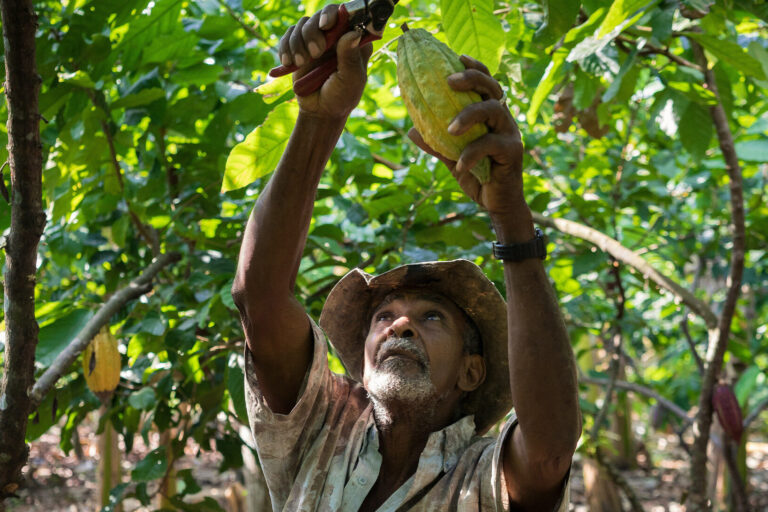- In Panama’s Darién province, jaguar predation on cattle is one of the top reasons for people killing the locally endangered felines, and a top threat to their populations.
- To reduce jaguar killings, the nonprofit Yaguará Panamá Foundation is working on conservation measures directly with livestock farmers and Indigenous families.
- A recent study documents jaguars’ movements through once-forested landscapes for the first time, providing biologists with better information for how humans and jaguars can avoid conflict.
- Using GPS and observational data, the organization helps create land management plans, such as installing electric fences to help keep jaguars away, while improving overall environmental conditions.
DARIÉN, Panama — In a small town called Metetí, deep in Panama’s Darién province, Luis Gutiérrez manages La Reina, or “The Queen,” a cattle ranch named for his wife.
His farm features a solar-powered electric fence that encloses the paddocks on his ranch, keeping the cattle contained and protected from jaguars (Panthera onca). On the other side of the fence, about 50 yards into the forest, camera traps have been capturing footage of the elusive felines crossing the small stream on Gutiérrez’s land since 2022. It’s common for jaguars to kill cattle in the Darién, and for cattle owners to retaliate by killing the felines. That’s why, for the past three decades, Darién has been the country’s top province for jaguar killings.
But near La Reina, the jaguars are safe — and so are the cattle. Gutiérrez is one of a small handful of farmers working with jaguar ecologist Ricardo Moreno and his nonprofit, Yaguará Panamá Foundation, to mitigate conflicts between humans and the big cats.
“We need to first help people,” Moreno says. It’s the cornerstone of his nonprofit’s approach to jaguar conservation.

Across Panama and Latin America, jaguars face a wide range of challenges, from retaliation to trafficking. But in Darién, which bridges jaguar habitats in South and Central America, conserving these animals through local communities is critical, experts say.
A key piece of a long corridor
Jaguar habitat extends from Mexico to northern Argentina, but not all jaguar populations are connected. In Central America, jaguar habitat has become very narrow — especially in Panama, the last and only land bridge between Central and South America, making Darién a critical area for jaguar conservation, says Roberto Salom-Pérez, director of Latin America programs at Panthera, the global wildcat conservation NGO. That’s why keeping the entire stretch of habitat connected is so important, he says.
“Any loss of these corridors will mean that we’re losing connectivity range-wide for the jaguar,” Salom-Pérez, who isn’t involved with Yaguará Panamá or its work, tells Mongabay in a video call.
As the apex predators of the ecosystems they inhabit, jaguars keep prey species populations at manageable levels. They also improve ecosystems’ overall resilience in the face of environmental changes, Salom-Pérez says. Protecting jaguars is therefore also about protecting overall biodiversity, he says.
Deforestation, he adds, decreases the cats’ habitat. Over time, this fragments and isolates jaguar populations, which decreases genetic diversity and can increase the risk of disease, deformities and cub mortality, Salom-Pérez says. With jaguars’ movements still unclear across Panama, he adds he’s worried about the fragmentation of their habitat.
Moreno and his team aim to clarify those movements using GPS collars and camera traps. So far, Yaguará Panamá has surveyed roughly 141,000 hectares (nearly 350,000 acres) across Chagres National Park and Darién National Park in eastern Panama.
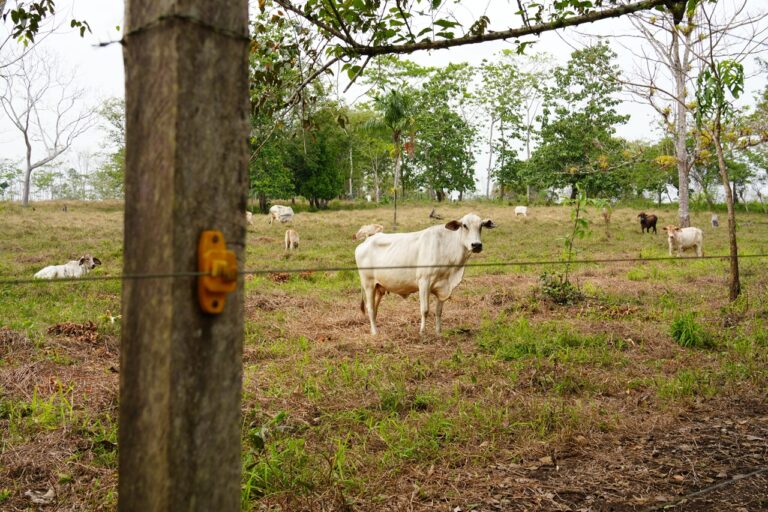
Gutierrez’s farm was part of a recent study, in which Moreno and his team tracked the movements of five GPS-collared jaguars across deforested landscapes in Darién, published in Tropical Conservation Science in April. They found that the ranges of Darién’s jaguars are much smaller than in other countries, and that the animals largely avoid cattle pastures, except to hunt. The results, the researchers say, are important for understanding how to maintain cattle ranching without destroying the forests jaguars need to survive.
Turning stock breeders into wildlife guardians
In 1999, as a freshly graduated biologist, Moreno visited a cattle ranch in Panama’s Colón province with his science textbooks proudly in hand. There had been several jaguar attacks reported there, and when he arrived, he found a large jaguar paw print in the mud. He excitedly reached for his plaster cast to make an imprint of it for research.
But the owner of the ranch “was looking at me like, ‘This guy is crazy,’” Moreno recalls. How could Moreno be so happy about an animal that had killed the farmer’s main source of income? For Moreno, it was a turning point when he realized science needs to be done with communities.
Cattle and calves are an easy target for jaguars and young cubs learning how to hunt. But from the farmer’s perspective, jaguars cause monetary losses, making them “the devil’s animal,” Moreno says. Many of the 395 jaguars killed across Panama from 1989 to 2023 were killed by angry farmers, according to his research.
“Anywhere in Panama where there are cows, you will have problems with jaguars,” Moreno says.
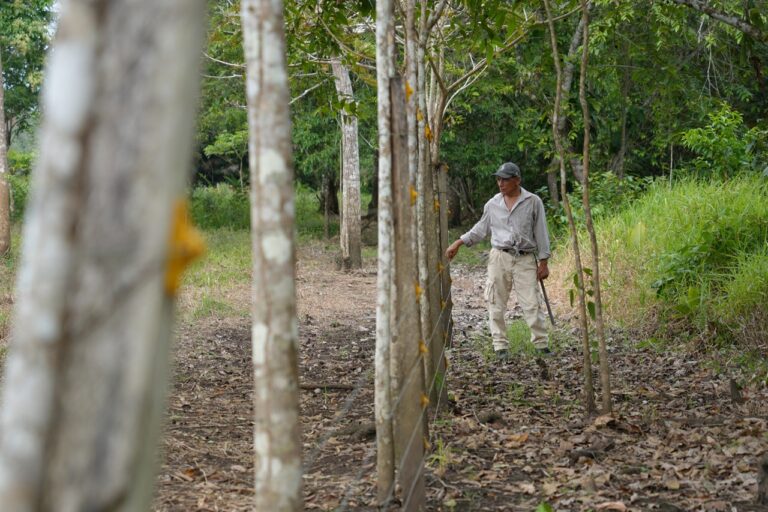
Using a combination of camera traps and GPS collars, his team drafted management plans with farmers based on the jaguars’ real-time movements. So far, his team has collared eight jaguars and currently works with about a dozen farmers across Darién.
Proper cattle and land management help reduce jaguar conflicts for a few reasons, Moreno says. Rotating cattle into several different paddocks, instead of letting them graze freely across the land, allows the grass to regenerate. This leads to well-fed cattle that produce high-quality meat, while also being less vulnerable to jaguar attacks in a space that’s easier to monitor. A big problem, Moreno says, is when ranchers allow their cattle to roam into the forest, or when they live far away from the ranch, leaving their herds unattended.
To keep jaguars away from farms, Moreno’s nonprofit installs electric fencing, which is less expensive to maintain than barbed wire.
“Now that I have installed it, I’ve realized it’s economical, it’s easy to manage, and it does not cost so much to repair it,” says Gutierrez at La Reina ranch.
Yaguará Panamá is also using a new software program that sends farmers a WhatsApp text message when a jaguar crosses a fence. Once farmers know how to properly manage their cattle — and get them to safety — they’re less inclined to kill them, Moreno says.
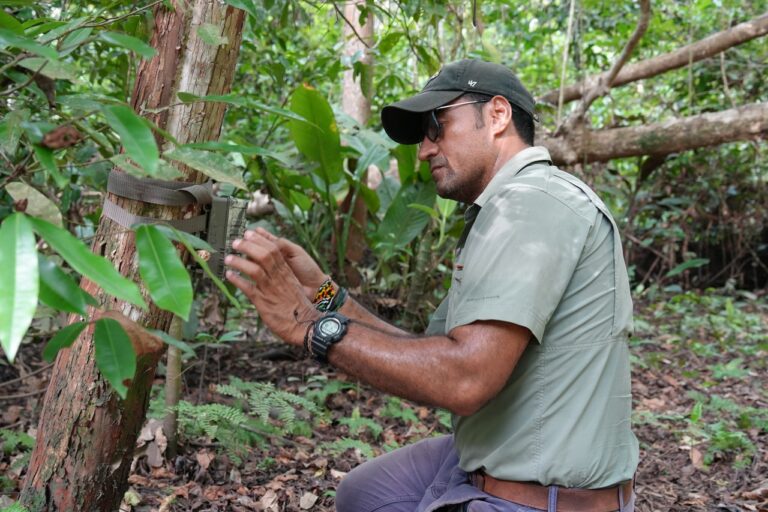
In responding to Mongabay, Panama’s Ministry of Environment says Yaguará Panamá is leading the work on protecting forest felines and managing human-jaguar conflict, as part of a $1.78 million ministerial project funded by the Global Environment Facility, a multilateral fund for climate and biodiversity projects. The project funds solar-powered electrical fences, GPS collars, technical assistance for farmers, habitat restoration research, as well as the creation of Panama’s first center for jaguar conservation and research.
Killing for profit on protected land
Retaliation for cattle attacks, though most common, isn’t the only lethal threat to jaguars. In Darién’s thick jungles, illegal wildlife trafficking is widespread, Moreno says.
He and other scientists have increasingly heard about cases of people killing jaguars for their skins and their canine teeth, with the latter considered good-luck charms. Sometimes, the claws and fat are used in traditional Chinese medicine. In rare cases, jaguars have even been kept captive as pets. For cash-strapped locals or migrants trying to get from South to North America, the price of trafficking jaguars is often a matter of survival, Moreno adds.
Jaguars are listed as near threatened on the IUCN Red List, but in Panama, they’re federally designated as critically endangered, which means killing a jaguar is a federal offense. However, law enforcement is often weak, and wildlife crimes aren’t prioritized as highly as other forms of trafficking.
When drug traffickers are caught, they’re usually jailed. “But if they catch you with animals, you usually don’t go to jail,” Moreno says. “That is a serious problem.”
Yet the same groups trafficking drugs are trafficking wildlife, too, researchers have found. “They will traffic whatever is profitable for them,” says Panthera’s Salom-Pérez, who wasn’t involved in that study.
Deep in Darién National Park, Yaguará Panamá has partnered with Indigenous Emberá families in a neighboring town called Pijibasal to monitor the forest.
Every day, Javier “Marco” Pacheco and Tilson Contreras hack through shrub and vines as they swiftly hike upslope to the park’s ranger station an hour away. From here, they and six other guides from Pijibasal help Moreno install, monitor and manage 76 camera traps across the park. Once the memory cards are full, they mail them back to Moreno, who uses the footage of jaguars and other wildlife to better understand their movements and ecology.

Patrolling the park, an area of 579,000 hectares (1.43 million acres), with only nine unarmed rangers and eight local guides is a grueling task in Darién’s humid, muddy and steep forest landscape. Apart from their work for Yaguará Panamá, Pacheco and Contreras also earn a living by giving guided tours to visitors in the highly biodiverse rainforest. They point out spots where harpy eagles (Harpia harpyja) have nested, and pause to listen to distant howler monkeys (Alouatta palliata).
“If tourists come, and there are no animals, they will stop coming,” says Marta Manyoma, Contreras’s wife, who has worked with Moreno and Yaguará Panamá since the partnership started in 2014, the longest-term jaguar monitoring effort in the country.
“My husband works with Ricardo because we used to see a lot of jaguars and other animals, [such as] wild pigs, but now we don’t see them because they are being killed and they are disappearing,” she adds. “That is why I have really liked what Ricardo is doing.”
Such rare wildlife has become a lifeline for Pijibasal. Tourists from all over the world come to catch a glimpse of the harpy eagle, camp in traditional thatch-roofed huts on stilts called tambos, and buy handmade crafts from Manyoma and the other local women.
The community’s partnership with Yaguará Panamá is more than just a way to leverage ecotourism for income. Manyoma says she values the educational component more than anything. She and her family are learning how to distinguish the sounds and scientific names of species, for example. She says she also hopes that tackling poaching means her children will continue being able to see animals in the wild.
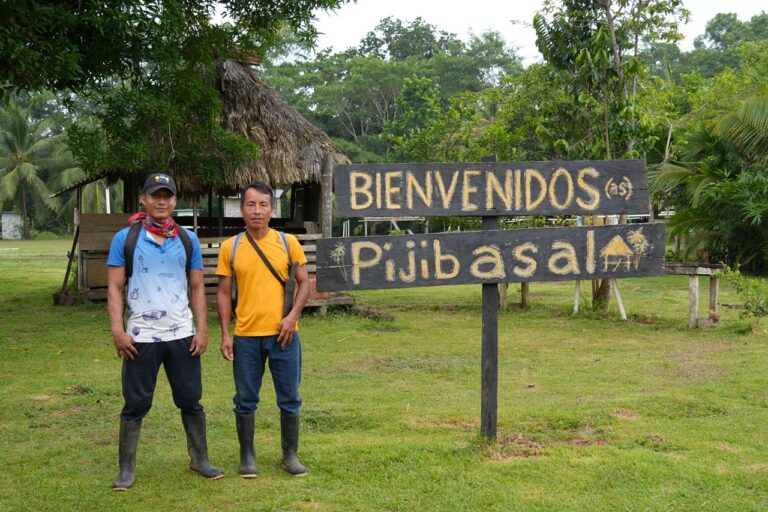
Ranching with, not against, forests
For Olmedo Barrios, environmental stewardship has always been central to his farming strategy — especially as he comes from an agricultural upbringing in the degraded province of Los Santos, southwest of Panama City. A former mayor of Chepo district, the now-retired Barrios raises cattle, pigs and chickens. But his mountainside estate doesn’t look like the clear-cut pasture typical of most ranches; instead, it’s full of lush forest, where he also grows citrus, pineapple and achiote, a local fruit.
“What we have to do is change our mentalities in the sense that we’re not supposed to be chopping down the forest,” he says. “We can raise cattle in smaller areas. That just takes a little more planning, a little more investment, and a little more work.”
Barrios has implemented a management plan with Yaguará Panamá and has started using electric fences around his property to deter predators, including jaguars. But many people see the jaguar — which people often mistakenly call el tigre, the tiger — as akin to death.
“The mindset is that we need to kill ‘the tiger,’” Barrios says. “That is just a lack of knowledge.”

He says he feels strongly that Moreno’s outreach and education will slowly help change that mindset. In the meantime, he adds, authorities should encourage more farming practices that work with forests rather than against them.
Panama’s National Land Administration Authority doesn’t grant land titles for forested areas, which Barrios says discourages farmers from maintaining forested areas that foster healthy biodiversity — including jaguars — around a rancher’s property.
“The government wants to protect the forest,” Barrios says. “However, why don’t they lend us money while maintaining the forest so we can develop other activities? That is a contradiction.” Beekeeping, he says, is one example of a wildlife-friendly farming practice that requires intact forests.
Bank policies are another major barrier, Barrios adds. Loans for raising cattle are restricted only to “grazelands,” areas defined as treeless. “If I go to the bank, and I show them [my land is] all grazeland, the bank lends me money,” he says. “But if I go with a forest, the bank will not lend me a penny.”
When jaguar predation does happen, the Ministry of Agriculture doesn’t compensate farmers for their lost cattle, which can be financially devastating for many farmers. In a response to Mongabay, the Ministry of Environment says the Agricultural Insurance Institute offers insurance policies that include coverage for damage caused by livestock depredation.
So far, Moreno’s trust-building with farmers and community members has paid off. When Barrios and Gutierrez speak with their neighbors, many of whom have lost cattle to jaguars, the latter ask how they can participate. In the end, Yaguará Panama’s goal is to encourage ranchers to adopt a holistic approach to land management, protecting not just cattle, but also wildlife.
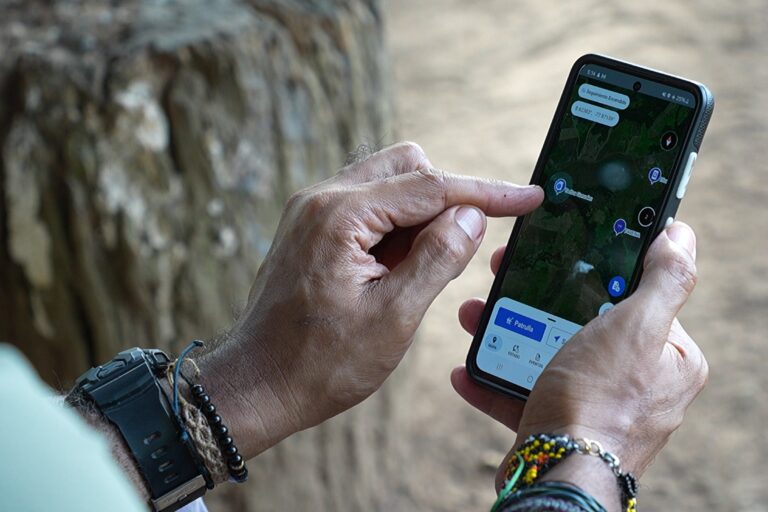
Gutierrez says he’s happy to know there are jaguars on his land.
“We need to learn to coexist with nature, not to try to go against it,” he says. “If we destroy nature, it will charge us with the consequences. In the future, we will have to pay it back.”
Miguel Urrutia interpreted field interviews from Spanish to English for this story.
Citations:
Moreno, R., de la Torre, J. A., Ortega, J., Young, N., Puertes, A., & Kays, R. (2025). Jaguar space use in the working landscape of Darien, Panama. Tropical Conservation Science, 18. doi:10.1177/19400829251332163
Moreno, R., Young, N., Puertes, A., & de la Torre, J. A. (2024). La investigación científica como herramienta a la conservación del jaguar en Darién, Panamá. Mesoamericana, 26(1), 10-14. doi:10.48204/j.mesoamericana.v26n1.a5073
Van Uhm, D., South, N., & Wyatt, T. (2021). Connections between trades and trafficking in wildlife and drugs. Trends in Organized Crime, 24(4), 425-446. doi:10.1007/s12117-021-09416-z
Banner image: In Central America, jaguar habitat has become very narrow — especially in Panama, the last and only land bridge between Central and South America, making Darién a critical area for jaguar conservation. Image by Eduardo Merille via Flickr (CC BY-SA 2.0).
FEEDBACK: Use this form to send a message to the author of this post. If you want to post a public comment, you can do that at the bottom of the page.



